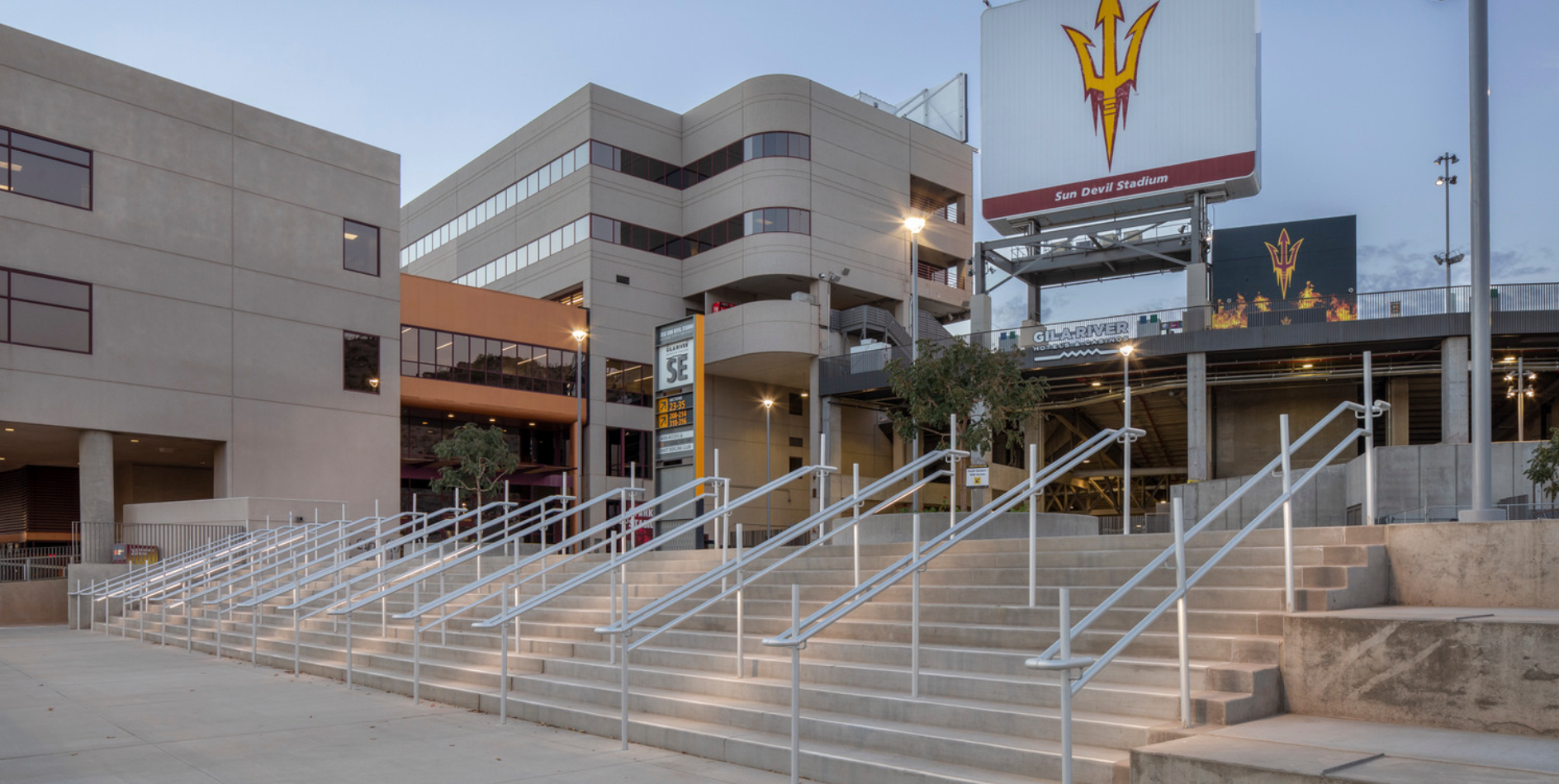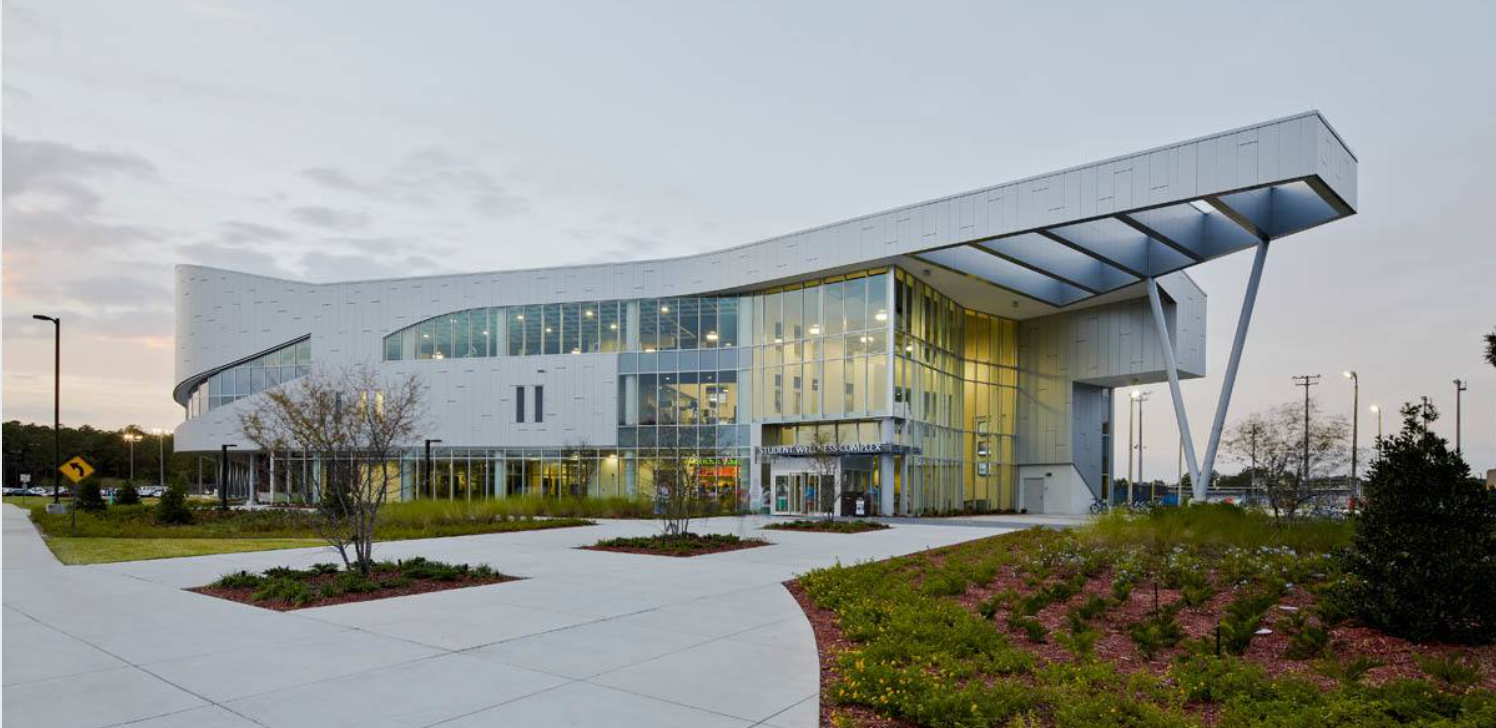
An E&I 2-Minute Read
Keeping ahead of fans expectations, and competing with 60 inch big screen TVs and comfort at home, is tricky. Modern fans expect more than just a game, they want convenience, and an immersive experience. When building or redesigning stadium experiences there are a few trends.
Shift toward lower seating capacity
Stadiums used to just have a "pack them in" layout. But that is changing. Kansas University is the latest football program considering lowering stadium capacity. A recent proposal suggests taking seating from 47,234 down to under 40,000. The reduction could make room for mixed-use development in the surrounding areas. It would help with the parking experience, add premium seating, and get fans closer to the field and create a better home field advantage. While the stadium only gets used 7 times a year in home football games, it could get year-round use if repurposed. Lowering seating capacity could make room for a conference center, hotel, and student concert venue.
Digital ticketing, mobile ordering, and grab-and-go packaged items
Printed tickets can be lost, damaged, or stolen. Using mobile devices is more convenient and reduces last minute stress. Fans are ordering food from their seats which improves operational efficiency and improves sales. Walk-up Grab-&-Go foodservice is becoming popular at big stadiums as well.
Connectivity in facility design
Fans are watching replays and connecting at their seats. They are posting about your event which is free marketing. Poor internet connection can detract from fan experience and maybe deter fans from attending in the future.
Designing for players
Modern facilities are putting emphasis on performance training areas and recovery spaces. It is going beyond just locker rooms and weight rooms. Athletics departments are building in physiotherapy facilities, player recovery zones, biometric screening monitoring, cryotherapy chambers, and massage rooms. Besides just player performance, these designs help schools with recruiting.
Focus on getting more usage, higher year round economic impact
Stadiums and athletic facilities are being reused to accommodate concerts, festivals, corporate events, and private rented gatherings. This helps show economic impact, with sources of income coming in. Some larger stadiums are even turning into complete entertainment districts, offering fans a place to socialize before or after events, or on weekends.
See our similar articles:
Small Schools with Large Athletics Facilities Projects in 2024.
5 Basketball Arenas that had Large Renovation Projects this Summer.


Arizona State Stadium Renovation - CASE STUDY
CORE Construction, an E&I partner
The project features stairs with lighted handrails, circular bench seating with skate-stops, 48-inch box trees, security cameras, monument signage, and flag poles.

U. North Florida Sports and Wellness Center - CASE STUDY
Gilbane Construction, an E&I partner
Gilbane provided construction management at-risk services for a 73,000 sq. ft. athletic center. Project included indoor running track, exercise, retail and student spaces. FULL CASE STUDY

Why Members Work With E&I?
6,000+
U.S. member institutions, universities, and K-12
200+
Member solicited buying
contracts you can access
$3B+
Yearly spend of E&I members
means large savings for you
E&I's Portfolio of Athletics Contracts
Did you know your institutions is a member of E&I Cooperative Services? E&I is a group purchase organization, solely focused on higher-ed. We've tapped into input from our collegiate institutions to build a comprehensive contract portfolio of athletics products and services. We've done the work, from vendor research, to RFP development, to negotiating with the most trusted athletic suppliers. View a few of our key athletics contracts.


IT sustainability is your best competitive advantage. Here’s why
If you think “sustainability” is just corporate goodwill, think again. SHI’s executive report argues it’s not only ...
Read More
